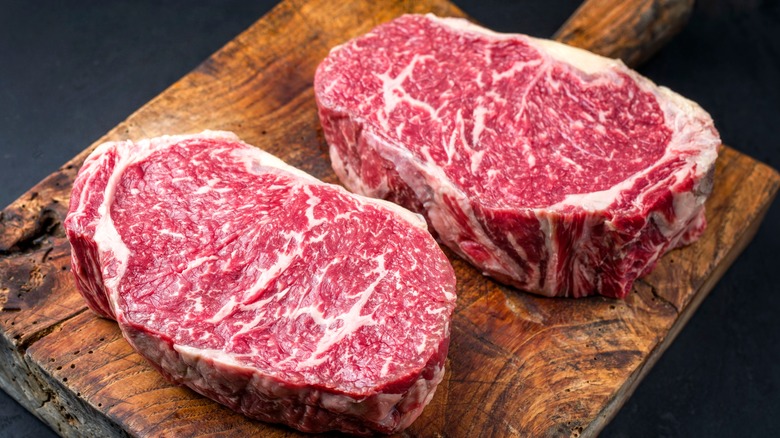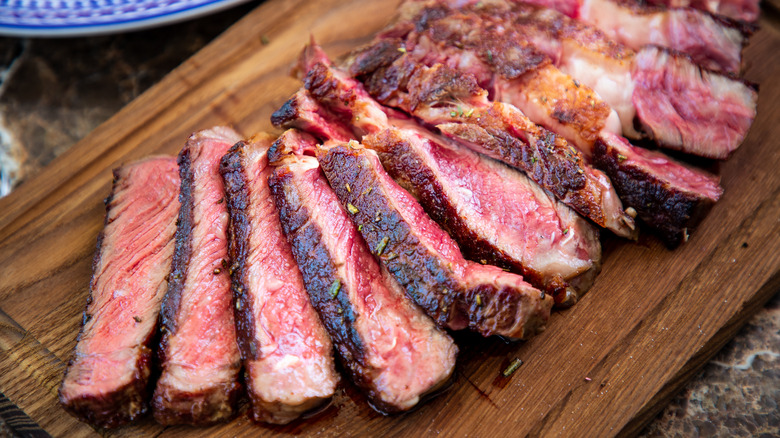Thick-Cut Steak Provides More Room For Cooking Mistakes
When you're treating yourself to a nice steak, you want to make sure you aren't making any mistakes. The normal process of cooking a steak isn't too complex, but it is subject to a very precise range of times and temperatures that you need to hit. Go too far and just 30 seconds or 10 degrees in temperature can result in an overcooked hunk of meat, and nothing is more disappointing than splurging on what is meant to be a nice dinner and ending up with a gray slice of leather. Thankfully, one of the best ways to avoid this fate doesn't require fancy techniques or new cooking tricks, it's just buying a thicker cut of steak.
The challenge of cooking a great steak is all about maximizing the contrast between the exterior and interior, and that is where a thick-cut steak really helps you. You want a fully browned crust while still keeping the center rosy, and with a thinner steak by the time the outside is fully cooked the inside is often overcooked. This is a risk with any steak, but with a thicker cut you get a longer cooking time, which widens your margin for error. So, if you need extra time to hit your ideal browning level, or you just get distracted, the difference in the finished steak will be far less detrimental.
Thick-cut steak takes longer to cook, and longer to ruin
No matter how you are cooking your steak, from a stovetop to a reverse sear, a thick steak adds a lot more time to your cooking, and a wider window where you'll be in your target temperature range. For a medium rare steak, an extra ½ inch of thickness can add a full minute or more of cooking time per side for searing or grilling. That's up to 50% longer depending on your steak; giving yourself that much extra time makes it way easier to avoid overcooking. A steak that might have been overdone by going 30 seconds past your mark may now need almost a minute to get there, and when you're dealing with increments that small, any leeway is very welcome.
So what thickness should you aim for? In general a 1 ½ to 2 inches is the sweet spot where you'll get a good, safe range of time. Go thicker than that and you start to deal with the opposite problem of burning the outside before the inside is done. And if you are cooking for more than one, it's better to stay in this range with a large piece you can divide later rather than cooking two or more steaks that are too thin. You may have to ask your butcher for a special cut at a normal grocery store, but it's steak, so getting it perfect is worth it.

